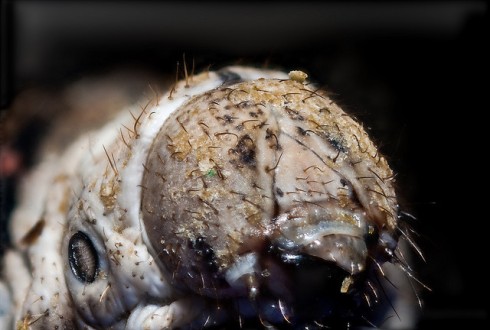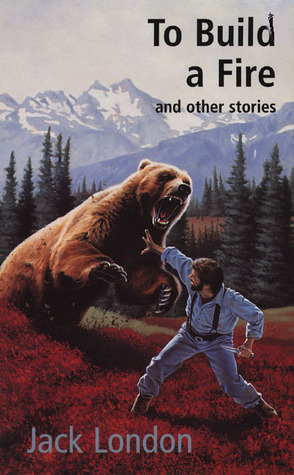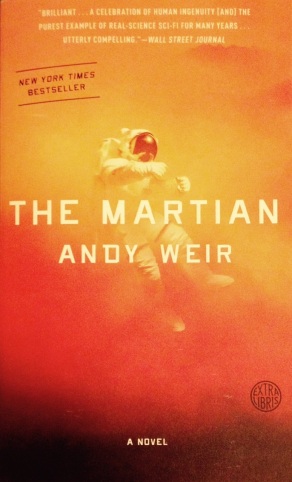![The Silkworm [2014] by Robert Galbraith](https://litbeetle.files.wordpress.com/2015/04/silkworm.jpg?w=490)
The Silkworm [2014] by Robert Galbraith
The first Cormoran Strike novel, The Cuckoo’s Calling, featured our burly hero solving the murder of tragically gorgeous model Luna Landry, and the high-publicity victim made the detective an overnight sensation. His business is booming with the revenue from wealthy cuckolds, and all seems to be settling into a calm and distinctly murderless daily grind. That is, until–in the grand old tradition of noir mysteries–a distraught woman appears on Strike’s doorstep. Leonora Quine’s husband, the contested and now washed up author Owen Quine, has gone missing, and we all know what “missing” means when it comes to books shelved in the mystery/thriller section of the bookstore.

Look at that guy. So private. Such detective. Though, I doubt Strike keeps such a neat desk. Or ever wears a tie, for that matter. (Photo from “blackwarrior57“)
Strike juggles his smaller jobs, the deep and manly angst he feels as his ex-girlfriend prepares to get married to some northern aristocrat, his confusing feelings for his secretary Robin, and the case of the missing author. Can things possibly get more complicated?? They always do. The missing Quine leaves behind the manuscript of his latest novel, a novel so grotesque and slanderous that Strike suddenly has his hands full with suspects in the author’s mysterious disappearance. Quine titled the unpublished novel Bombyx mori, the Latin name for the silkworm, and it reads like a raunchy, X-rated Pilgrim’s Progress. The characters of the novel are thinly veiled references to the people in Quine’s life, and no one escapes the man’s scathing criticism. Quine’s agent, editor, publisher, wife, mistress, protégé, and rival all feature prominently in Bombyx mori and all get the symbolic shaft in the most wonderfully gruesome, vivid and vitriolic ways. The caustic nature of Owen Quine’s opus leaves Strike with too many and, yet, none at all. It’s up to his perseverance and Robin’s clutch skills for the duo to find out what really happened to the antagonistic author.
The brutality of The Silkworm blows The Cuckoo’s Calling out of the water. From the graphic, carnal detail of Owen Quine’s unpublished Bombyx mori to the gruesome nature of Strike’s discoveries in his investigation, the content of this novel proves to the world that Galbraith holds no reservations with her writing and pulls no punches. One can’t help but wonder that, since everyone knows her true identity, Galbraith is making that extra special effort to distance her new works from the young adult categorization of the writing that made her a worldwide phenom. On the other hand, the blood and guts of The Silkworm also point to the deliciously evil minds of writers.

This cute little bugger is the namesake of Owen Quine’s novel Bombyx mori. (Photo from “Steve Begin“)
More disturbing than icky silkworms and the vile details of Bombyx mori is the pattern Galbraith creates among her female characters, who are portrayed as possessive, passive-aggressive, wastes of time. Even Robin, despite one or two flashes of brilliance, suffers from the moodiness of a petulant child. Strike’s desire to help Leonora Quine comes from his personal sense of honor and morality rather than any empathy for her, as seen from his constant impatience with her grief. The men in the novel are evil, and the women in the novel are motivated entirely by the men around them. I hope future Cormoran Strike novels (and I’m sure there will be future Cormoran Strike novels) give women more agency and less angst. Robin won my admiration in The Cuckoo’s Calling and I would love to see her come into her own as a full crime-fighting partner beside Strike.
Read It: Gore hounds and mystery buffs will eat this right up, not to mention J.K. Rowling zealots! The sequel to Robert Galbraith’s The Cuckoo’s Calling is classic noir with a touch of Criminal Minds-level grotesquerie, and our favorite one-legged private detective is on the case, prepared to solve mysteries with a combination of brute, Cornish force and straight-up perseverance.
Don’t Read It: Not for the faint of heart or weak of stomach, The Silkworm can be a little too graphic–both in the bedroom and in the Billiards Room with the knife (and the hydrochloric acid), if you know what I mean. All the darkness Rowling alluded to in her Harry Potter series is fully realized here in Galbraith’s Cormoran Strike series.
Similar Books: One other author comes to mind as having accomplished exactly what Robert Galbraith aka J.K. Rowling is currently doing: Roald Dahl forged his career penning beloved children’s novels about magic and love and overcoming the horrors of the growing up, while simultaneously establishing his collection of wonderfully raunchy adult stories about sex and kinkiness. Check out Switch Bitch or the collection of stories in The Best of Roald Dahl. And, of course, Robert Galbraith’s first Cormoran Strike novel The Cuckoo’s Calling should be the prerequisite to The Silkworm, but it’s not entirely necessary.

Robert Galbraith (aka J.K. Rowling) reads to her adoring fans from one of her books, presumably not this one. I love that the same author who can sit primly in wedge heels reading to kids in a garden can also write about grotesque murder and psychopathic sexual angst. (Photo from “Devon Steven“)
![At the Water's Edge [2015] by Sara Gruen](https://litbeetle.files.wordpress.com/2015/04/at-the-waters-edge.jpg?w=490)



![A Darker Shade of Magic [2015] by V.E. Scwhab](https://litbeetle.files.wordpress.com/2015/03/a-darker-shade-of-magic.jpg?w=295&h=457)



![Shadow Scale [2015] by Rachel Hartman](https://litbeetle.files.wordpress.com/2015/03/61kw8eu2uvl-_sy344_bo1204203200_.jpg?w=490)



![Serena [2008] by Ron Rash](https://litbeetle.files.wordpress.com/2015/02/serena-cover.jpg?w=318&h=474)



![In the Heart of the Sea [2000] by Nathaniel Philbrick (Photo from Wikipedia)](https://litbeetle.files.wordpress.com/2015/02/in_the_heart_of_the_sea_-_book_cover.jpg?w=432&h=646)




![The Buried Giant [2015] by Kazuo Ishiguro](https://litbeetle.files.wordpress.com/2015/03/the-buried-giant.jpg?w=290&h=436)




![City of Savages [2015] by Lee Kelly (Photo from "Goodreads")](https://litbeetle.files.wordpress.com/2015/03/city-of-savages-goodreads.jpg?w=490)




![The Marauders [2015] by Tom Cooper](https://litbeetle.files.wordpress.com/2015/03/the-marauders.jpg?w=299&h=466)

